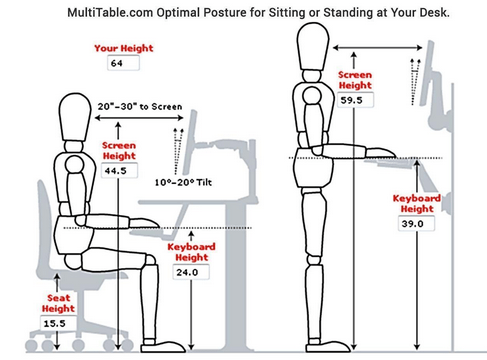Repetition : Muscle effort increases in response to high force requirements, increasing associated fatigue and lead to MSI.
Poor Posture: Awkward postures place excessive force on joints and overload the muscles and tendons around the effected joint. Joints of the body are most efficient when they operate closest to the mid-range motion of the joint.
Individual Poor Work Practices: If a worker adopts poor lifting techniques or adopts a sitting posture that does not optimise muscle or joint function this too can increase the probability of developing a MSI.
Poor Fitness: Smoking, excessive alcohol intake, poor health habits and obesity predispose an individual to MSI.
Rest: Workers who do not get adequate rest and recovery put themselves at higher risk.
Poor Nutrition, fitness and hydration.
